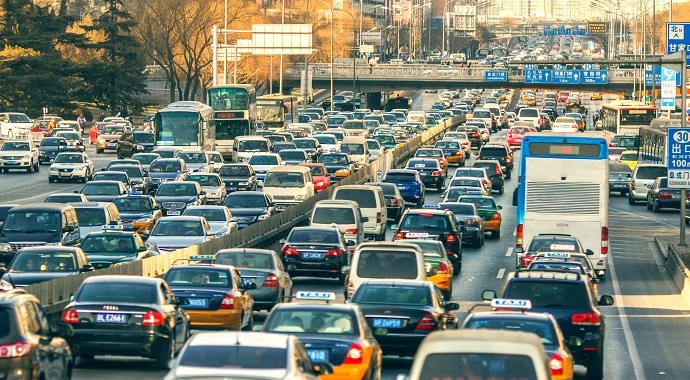Congestion pricing may reduce vehicle size
Satellites use solar reflections to detect methane leaks offshore / Vietnam's coffee exports to the UK benefit from UKVFTA
Researchers from Washington State University and the Brookings Institution studied a sample of nearly 300 households in the Seattle area over a six-year period. They discovered that the more congested their commutes, the more likely they were to purchase larger, safer, and more comfortable vehicles. The researchers then determined, through modeling, that congestion pricing would reduce the market share of mid- to full-size SUVs by 8%.
Nationally, reducing the number of large vehicles on the road would result in a 10% decrease in the vehicle fatality rate, thereby saving lives and $25 billion in associated costs, in addition to a 3% improvement in fuel efficiency, resulting in savings of nearly $10 billion.
"We found that congestion pricing can reduce congestion on one side and reduce vehicle size on the other," said Jia Yan, WSU economics professor and corresponding author on the study published in the Journal of Econometrics. The positive effects of reducing vehicle size can then reduce energy consumption and fatality rates.

Congestion pricing may reduce vehicle size.
In 1980, light trucks and SUVs comprised only about 20% of newly sold vehicles. In 2017, the percentage had increased to 62%. According to previous research, traffic congestion can lead to a "arms race" in which drivers purchase ever-larger vehicles for their perceived safety on congested highways, where accidents are more likely to occur.
"If the highways you are travelling on are very congested, and you are sitting in a small car surrounded by many large SUVs, that may motivate you to purchase a larger car to protect yourself. It's logical reasoning," said Yan. "If the congestion decreases, and drivers can easily travel on a free-flowing highway that self-protection motivation drops."
Yan added that drivers are also drawn to the comfort of larger vehicles when they spend more time on the highway. The authors discovered that when congestion decreases, the two motivations of safety and comfort also decrease, and commuters are less likely to purchase larger vehicles.
Studies indicate that larger vehicles increase the risk of fatalities for the occupants of smaller cars in multivehicle accidents. While many people believe that owning a large SUV or light truck will protect them personally, larger vehicles increase the risk of fatalities for the occupants of smaller cars.
"There's always a trade-off between your own benefits and the cost to others in society," said Yan. "When people purchase a large vehicle, they don't always take in these externalities — these negative impacts — into consideration. They only consider their own self-protection, or whether they are comfortable when they're driving, so this is why we need better policy."
Journal Reference: Clifford Winston, Jia Yan. Vehicle size choice and automobile externalities: A dynamic analysis. Journal of Econometrics, 2021; 222 (1): 196 DOI: 10.1016/j.jeconom.2020.07.032
End of content
Không có tin nào tiếp theo



